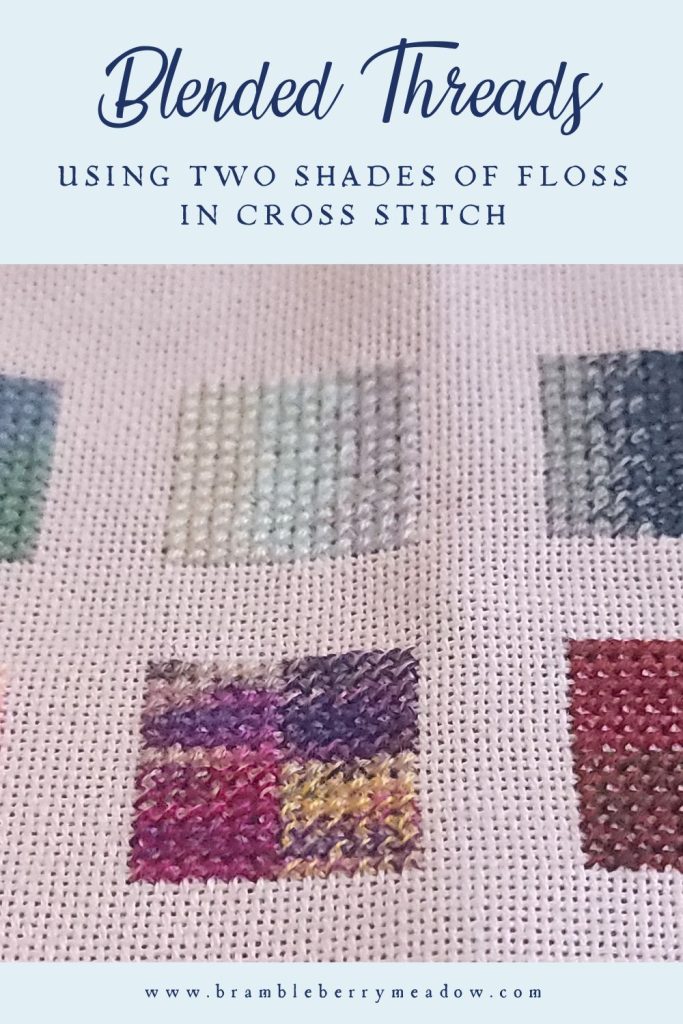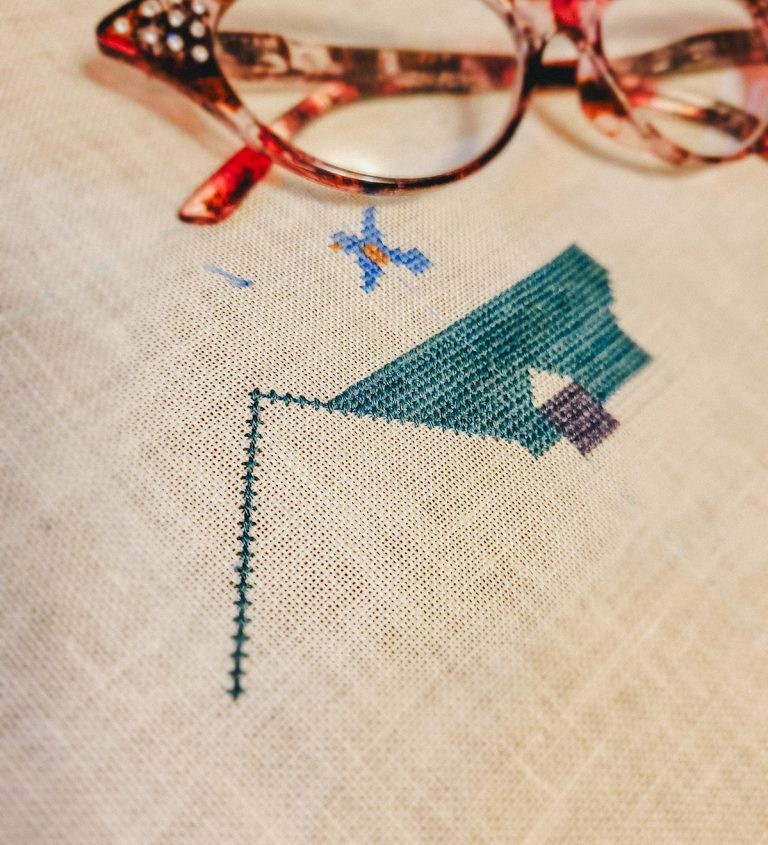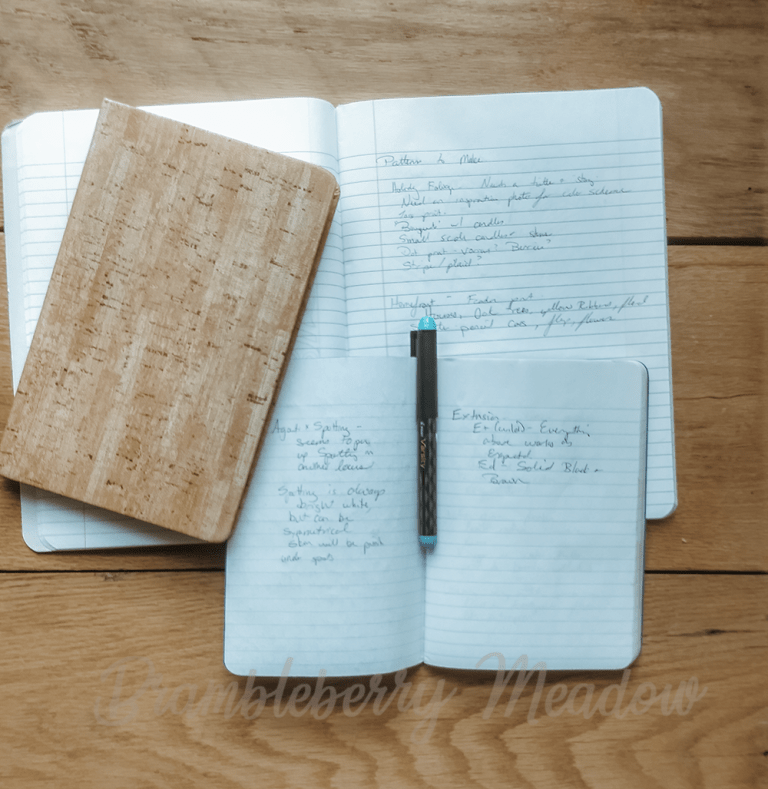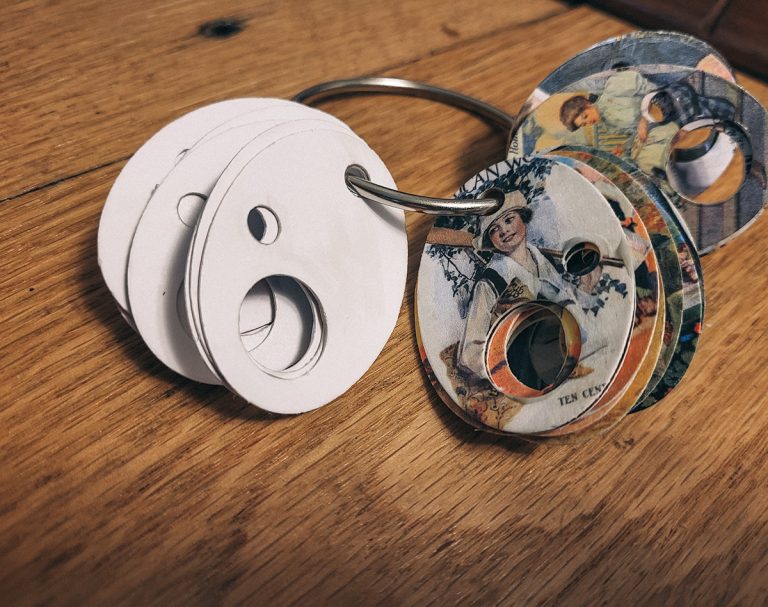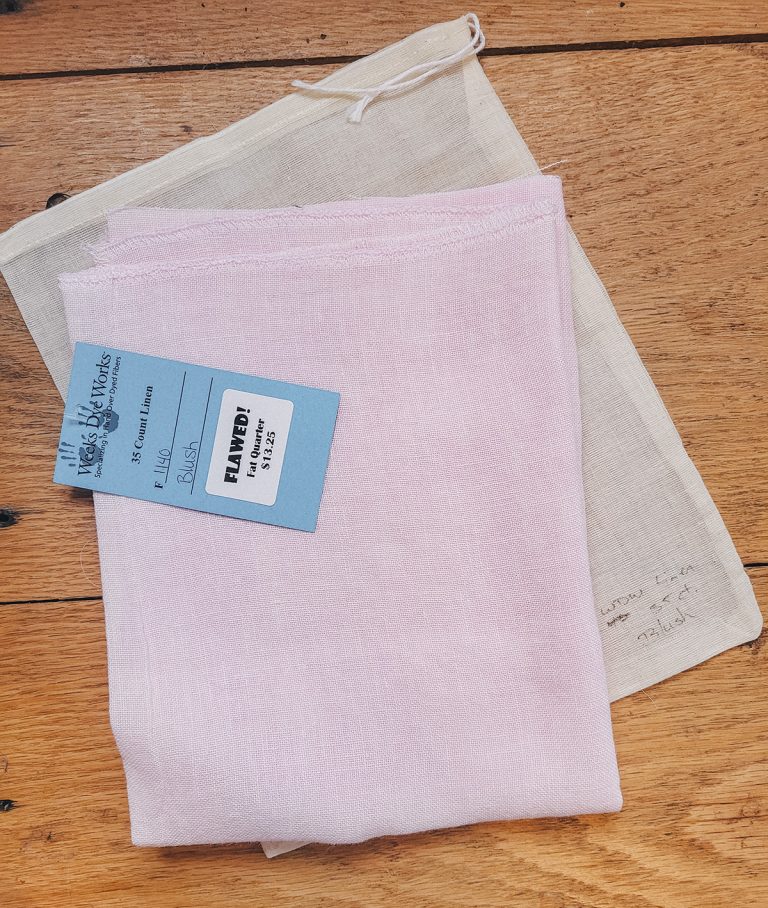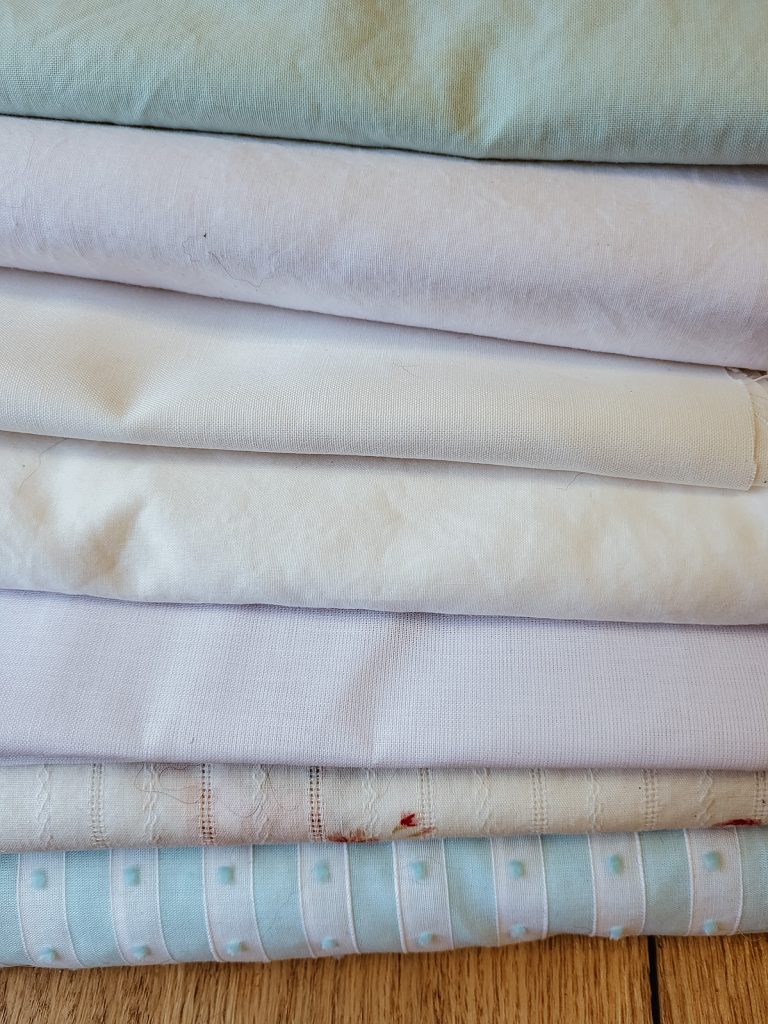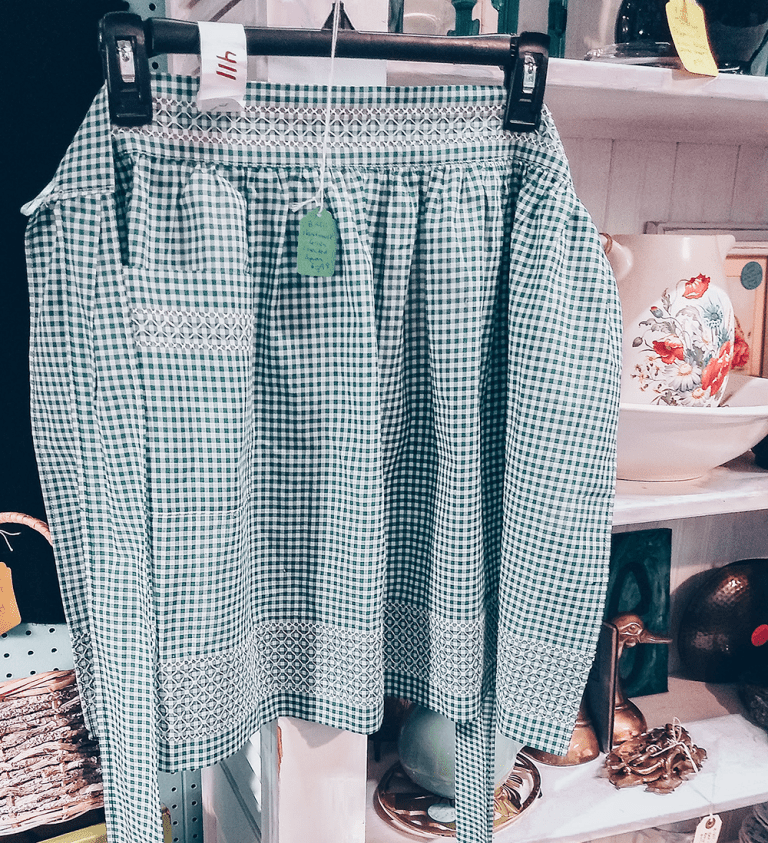Blending Threads in Cross Stitch
Blending threads in cross stitch, on first glance, seems like a bit of an over-the-top move. After all, DMC has 500-plus colors. Most other companies have nearly as many choices. And that’s without even getting into the various companies that market hand dyed threads. But when you actually start designing cross stitch pieces, you start to notice the “holes” in those color collections. You can make do with the existing colors, you can change your design plan – or you can blend one strand of two different colors together to get where you want to be. So go prep your threads and fabric and lets get ready to stitch some sample squares
Now, this is by no means a new idea. In fact, I think the queen of the blended thread in design is probably Teresa Wentzler. It was in stitching her pieces that I discovered what nuance blended threads can add to a design. So let’s take a look at some of the different ways you can make use of blended threads in cross stitch to create different effects.
Transitioning From One Color to Another
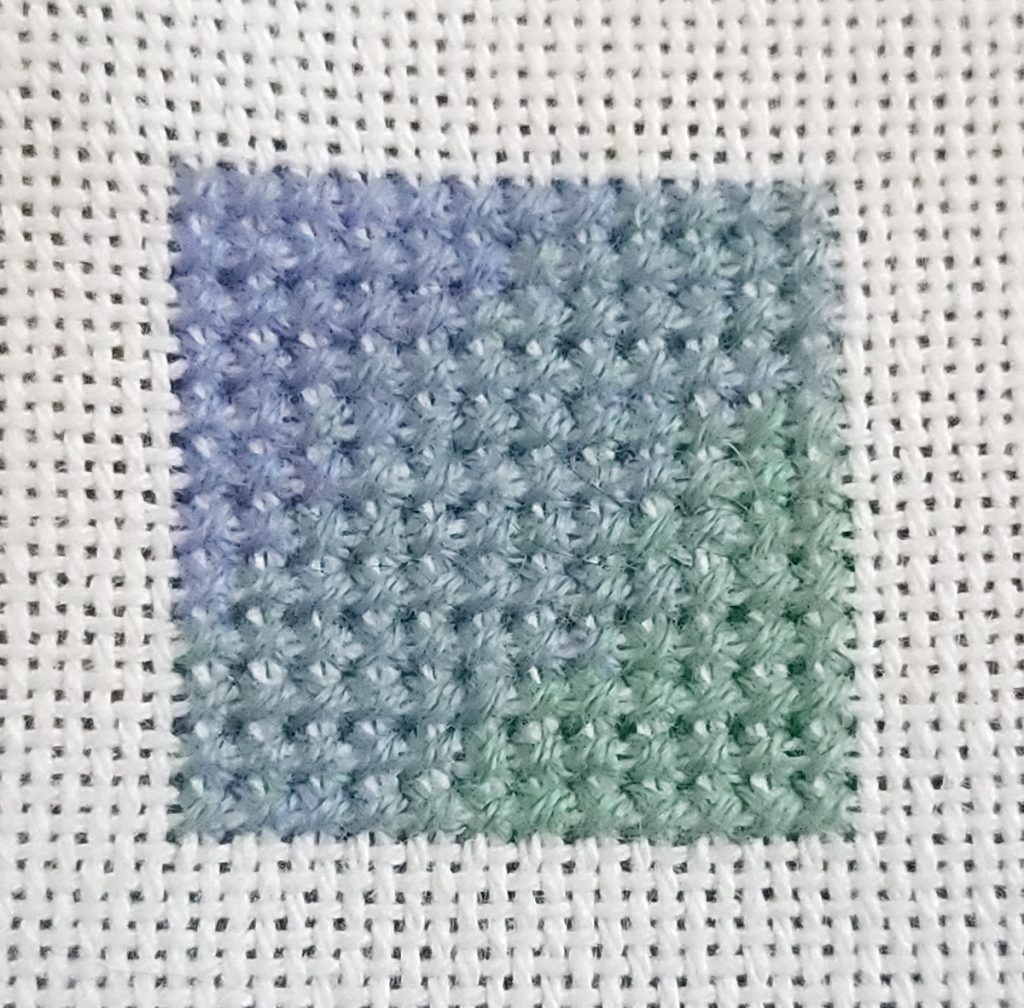
Sometimes, you want to blend from one color to another, and there isn’t really an in-between shade to use. This square is stitched from the upper left corner in DMC 3839, with the right lower corner in DMC 3816. And the strip that goes from the lower left corner to the upper right corner is stitched with one thread of each.
You do have to be careful that your colors are not fighting with each other. Both of these are cool colors. You can go from, say, red to blue. But you’re want to go from a cool red to a cool blue. If you try to transition from a warm red to a violety blue, or from a cool red to a turquoise blue, the blended color in the center will move toward brown.
This is also a transition that can be used to go from a light color to white, with the transition being a color more pale than the factory range may offer.
Making a Thread Color Warmer or Cooler
You can also use a blended thread to move a color either warmer or cooler. In this stitched square, the base color is DMC 747, a lovely light robin’s egg. blue. The left hand side of the square is one strand of 747, and one strand of DMC 3866. I stitched a saw-tooth transition between the colors, so you can appreciate how these shades blend. On the right hand side, the 747 is blended with a single strand of DMC 415. I probably could have used an even paler grey to move the 747 cooler, but maintain the pale color value.
When you are trying to warm up or cool down a color, try to use a strand of a warmer or cooler floss that is of a similar value to give the best result.
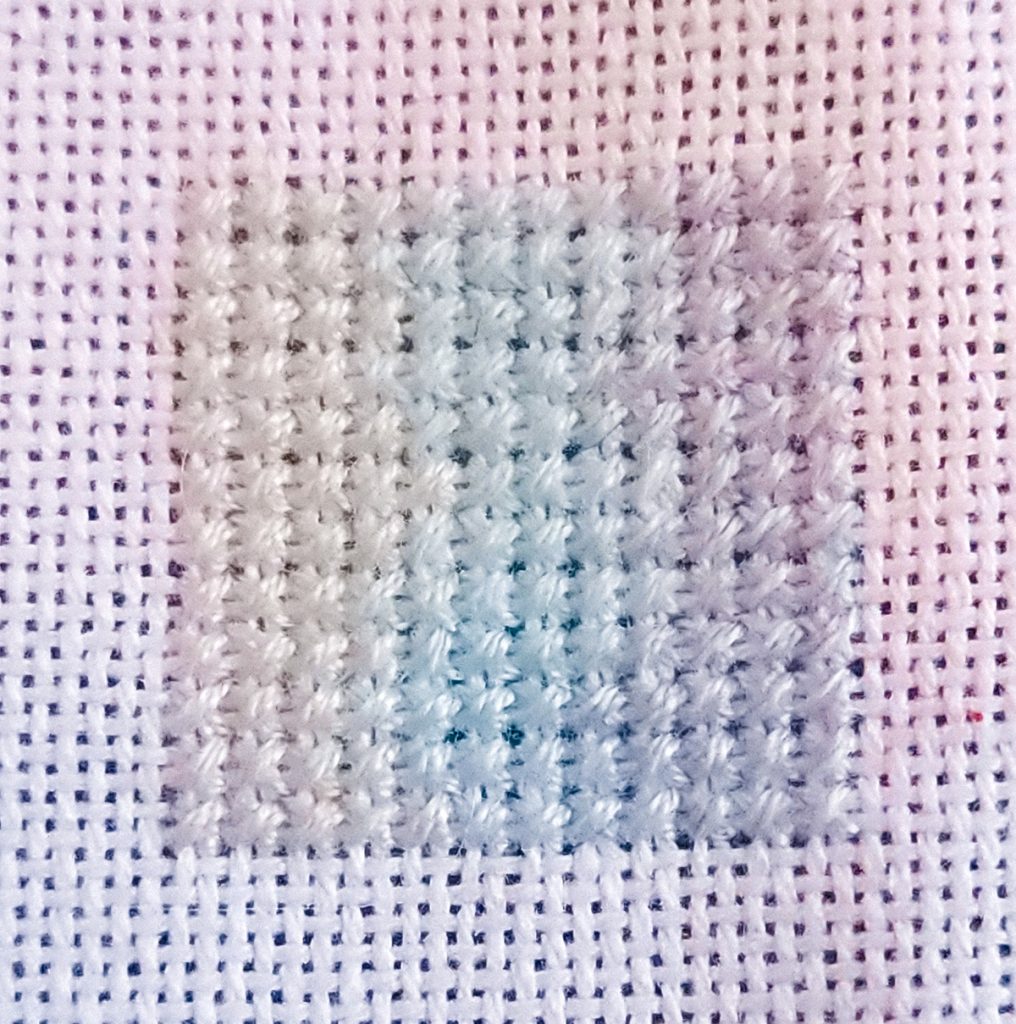
Transitioning Both Value and Hue
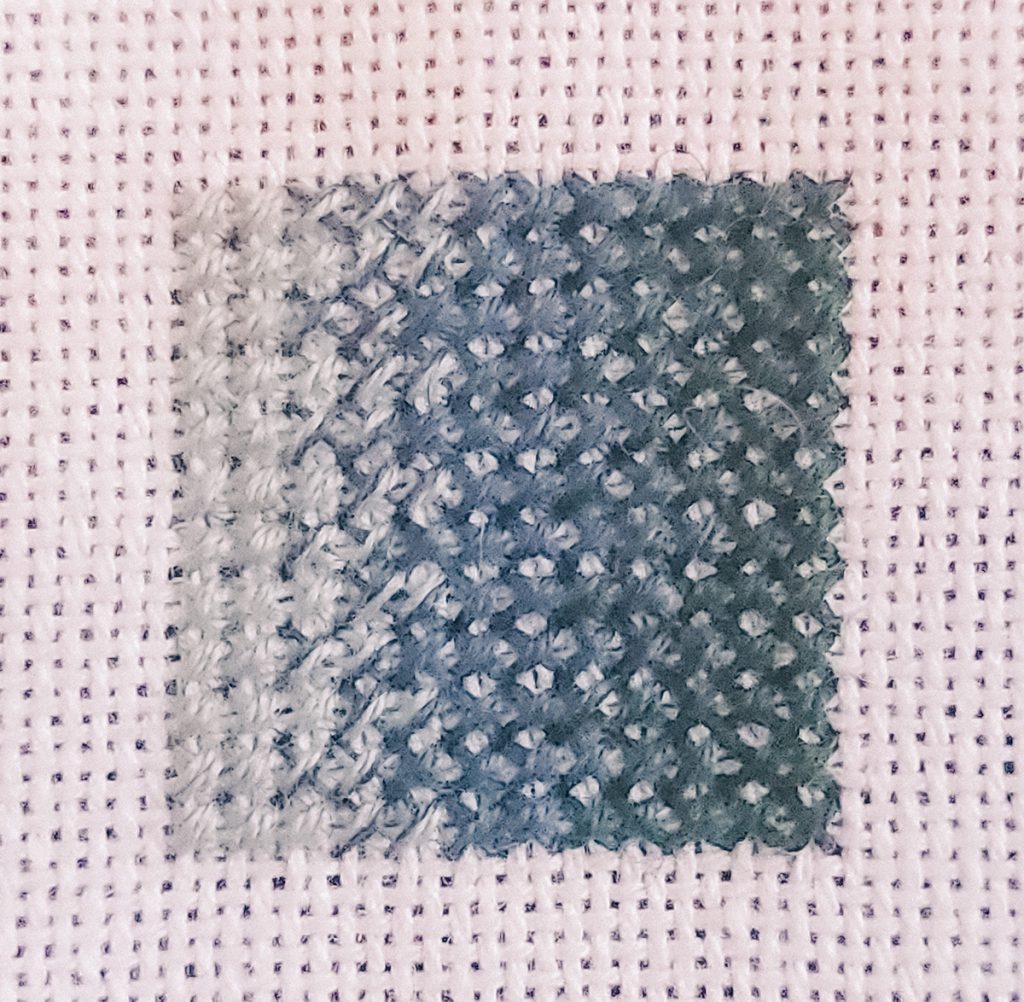
Note: I did try to color adjust these photos on this page, so that you can appreciate the transitions. That’s why the white ground looks more blue, or yellow, depending on the adjustment made to highlight the floss. This square is stitched with three vertical strips of solid colors – the far left, the center, and the far right – and two strips of blended thread.
The colors from left to right are DMC 927, DMC 924, and DMC 500. The blended strips are 927+924, and 924+500.
The three-way transition moves not just from dark to light but also from a mallard blue into a dark green.
You’ll notice that the 927+924 blend is more obvious – you can see the dark and light strands separately. Because 924+500 are close in value, the blend is more natural.
Darkening or Lightening a Hand Dyed Thread
Lines of hand dyed threads are usually more constrained than solid color lines. There are still lots of shades, but fewer available ways to transition in darkness or lightness between them. Blending a single strand of a hand dyed thread like Weeks Dye Works with a single strand of DMC can make the floss “read” lighter or darker.
This square is made up of four 6 x 6 stitch squares. The upper left square is two strands of Weeks Dye Works Cherry vanilla. The upper right square is one strand of WDW Cherry Vanilla plus one strand of DMC 818. That whole square reads a little lighter. The lower right square is one strand of WDW Cherry Vanilla plus one strand of DMC 3713. In the photo, it’s pretty indistinguishable from the square above. In person, the difference is perceptible, but subtle. Evidence for why you should stitch a test square before you opt to use a blended thread.
The lower left square is one strand WDW Cherry Vanilla, and one strand DMC 760. The whole square is darker than all of the others.
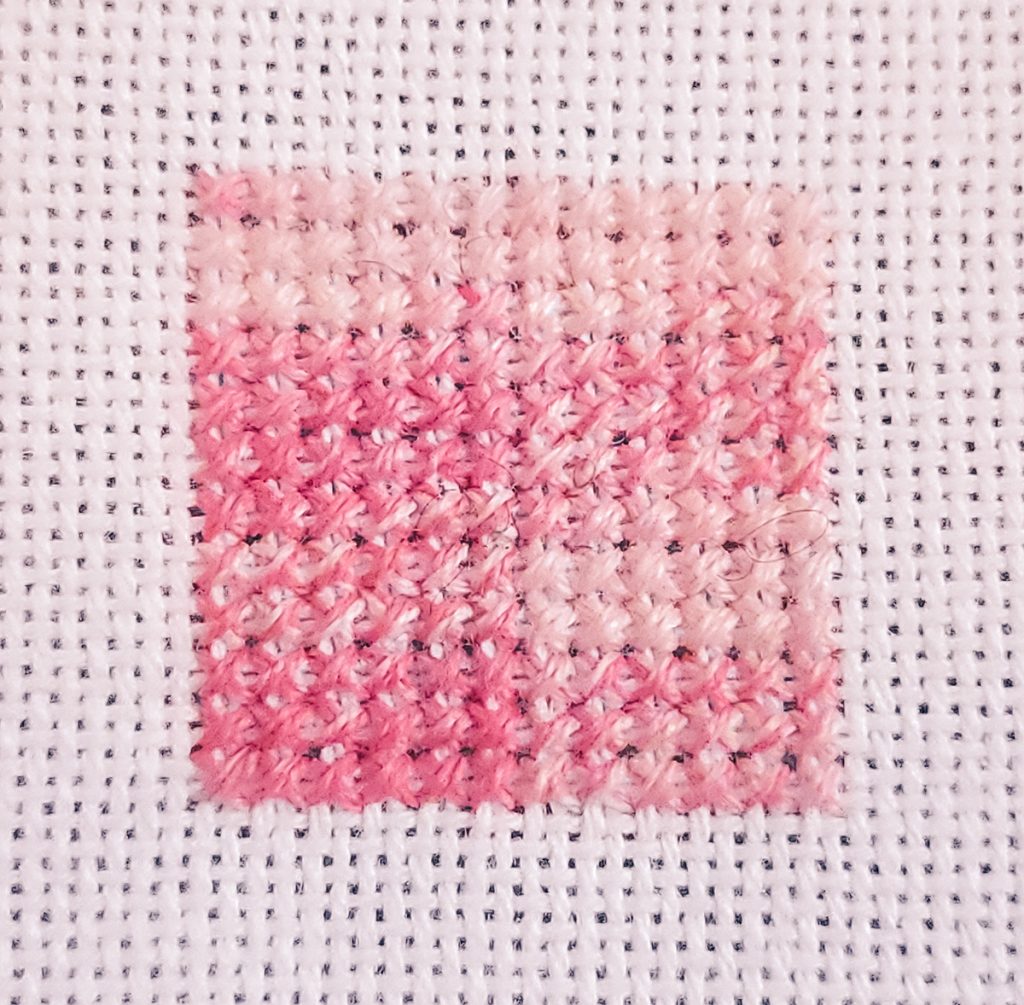
Altering the Color Balance of Very Colorful Threads
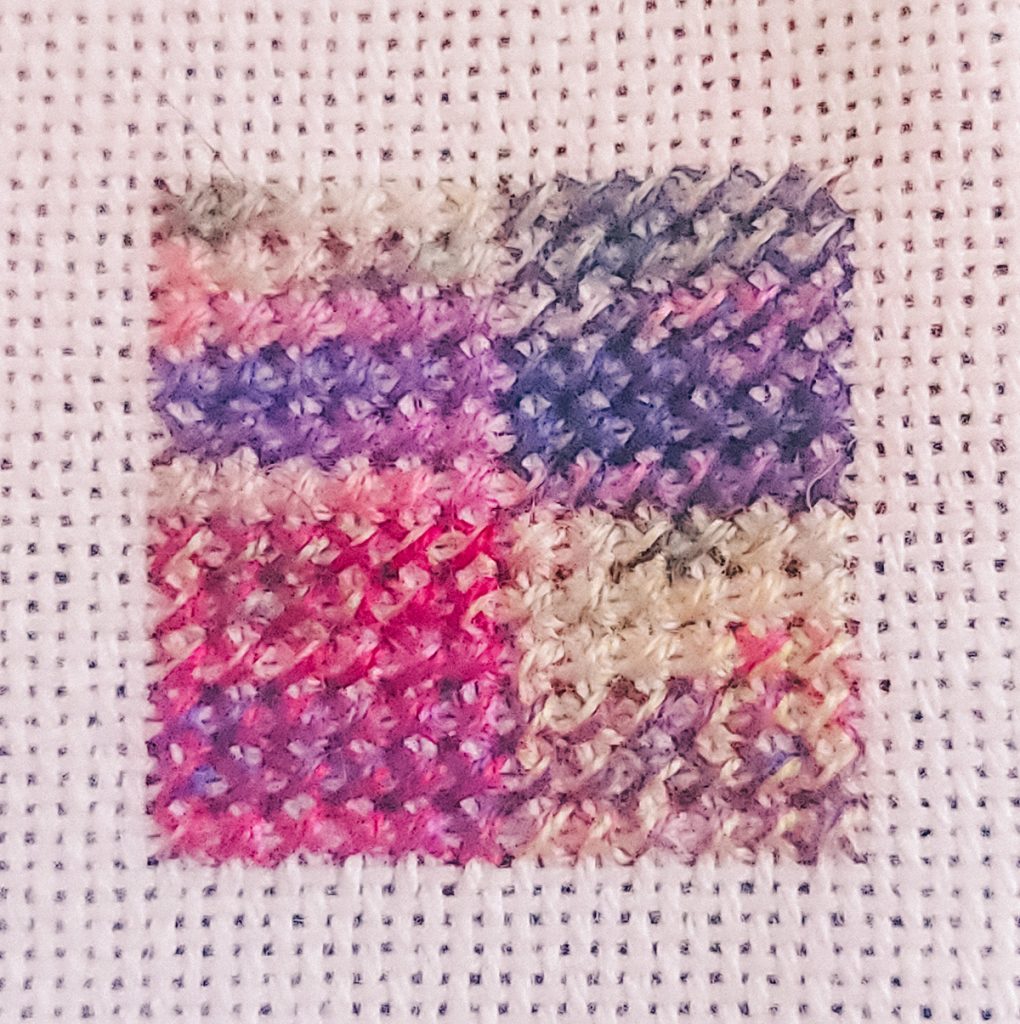
Some hand dyed shades can be very colorful, and sometimes it might be useful to be able to tone down the various shades or just tip it more in the direction of one of the base shades.
Let’s walk around this square, too. The upper left is two strands of WDW Bethlehem. I then chose colors from those in Bethlehem to manipulate it a bit. The upper right square is one strand WDW Bethlehem, and one strand DMC 336. The navy floss takes the entire color a little darker, and much cooler.
The lower right square is one strand WDW Bethlehem and one strand DMC 676. This light straw color tones down all the colors in Bethlehem, and makes them all a little warmer.
The lower left square is one strand WDW Bethlehem, and one strand DMC 915. This whole square reads more as a shaded dark pink.
Adjusting the Tone of a Semi-solid Hand Dyed Thread
This final square shows some of the effects you can get that might tone down the “splotchiness” that happens from color pooling in hand dyed threads or otherwise give a more antiqued effect.
The upper left square is two strands of WDW Lancaster Red. The upper right squares is one strand of WDW Lancaster Red plus one strand of DMC 648. The lower right square is one strand of WDW Lancaster Red and one strand of DMC 3774. Once again, the picture washes out some of the nuances – the whole right side of the square looks more or less the same color in the photo. In person, the upper portion is perceptibly cooler than the lower. Both, though, have the tweedy effect you get when mixing threads of very different values.
The lower left square is one strand of WDW Lancaster Red and one strand DMC 935. Using a green that has a similar value to the red makes it both a little darker and less vibrant.
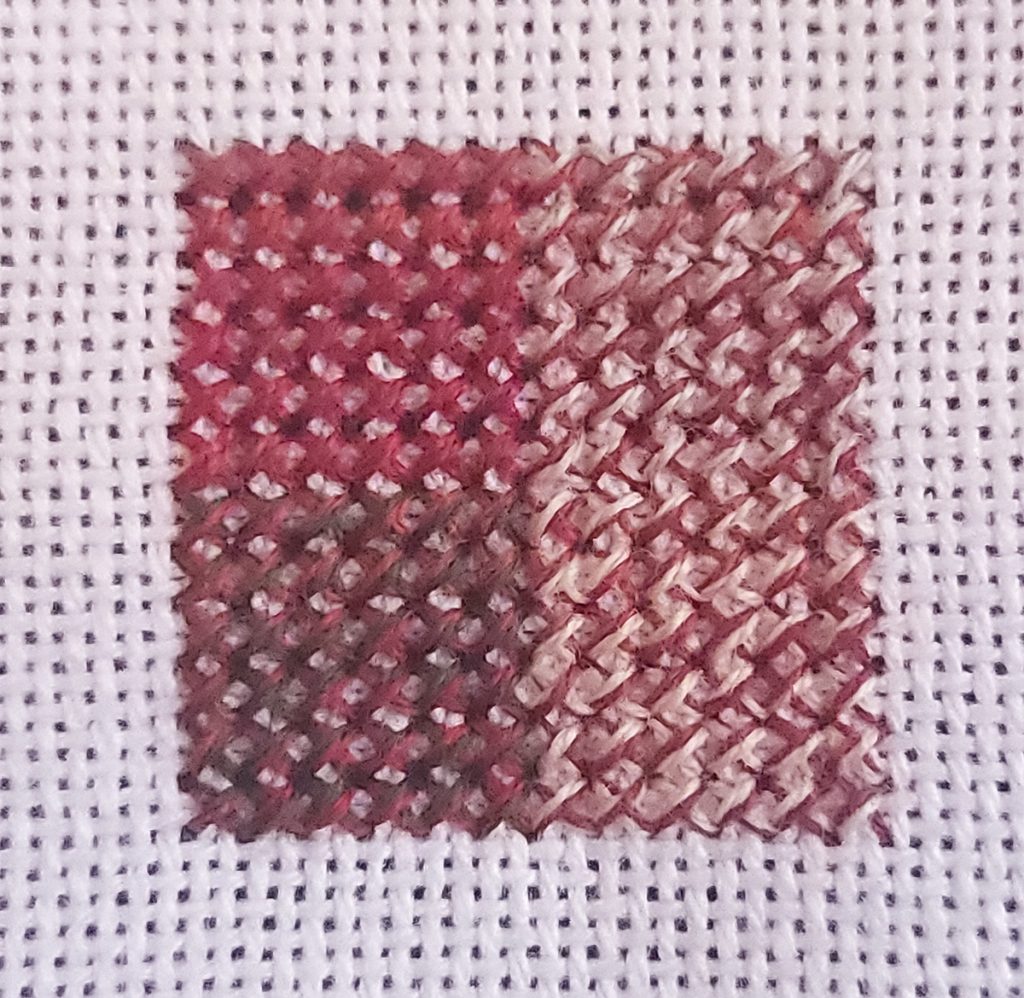
Tips and Tricks for Stitching with Blended Threads
Remember that using two threads of very different values will give more of a tweedy effect, while two shades that are similar in value with blend more smoothly.
Treat your threads like paints, for mixing. A classic set of paints uses what’s called a “double primary” system – a cool red, blue, and yellow, and a warm red, blue, and yellow. Remember that mixing very cool and very warm based shades will yield a muddy result.
From a practical standpoint, blending a solid thread with a hand dyed thread can be an excellent way to get more bang for your buck – you can use half as much of those somewhat expensive hand dyed threads. You could, for instance, blend WDW Lancaster Red with DMC 815. You’ll still get a lovely red that’s just a little less mottled. And your WDW thread will go a little further.
When you’re using blended threads, it can be helpful to keep a thread organizer labeled for you blended threads, where you can park your needle between uses. If you’ve got multiple needles threaded, you can set aside your blended thread without forgetting which shades are on it until you need it again.
Using one thread of two different colors works best on a narrow range of fabric counts – it’s best for pieces that are worked on 14-18 stitches per inch.

